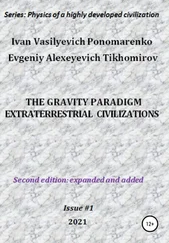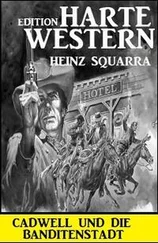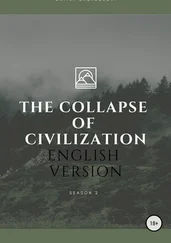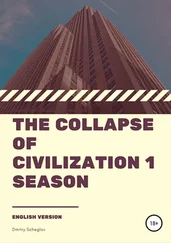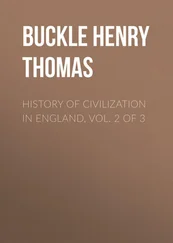3 North Whitehead, A. and Griffin, D.R. (1978). Process and Reality: An Essay in Cosmology. Corrected ed. New York: Free Press.
4 Perry, M., Baker, J.W., and Pfeiffer Hollinger, P. (2003). The Humanities in the Western Tradition: Ideas and Aesthetics. Vol. I: Ancient to Medieval. Boston: Houghton Mifflin.
5 Sophocles (2019). Sophocles, Tereus, fr.583 (Radt). Aleator classicus. https://aleatorclassicus.wordpress.com/2012/04/21/sophocles‐tereus‐fr‐583(accessed 18 October 2019).
6 Stearns, P.N. (1977). The Face of Europe. St. Louis: Forum Press.
7 Van Dolen, H. (2018). Greek Homosexuality. Livius. https://www.livius.org/articles/concept/greek‐homosexuality(accessed 18 October 2019).
8 Weiner, J. (2015). What Caused The Mysterious Bronze Age Collapse? Ancient History Et Cetera. http://etc.ancient.eu/2015/05/20/what‐caused‐the‐bronze‐age‐collapse(accessed 18 October 2019).
1 1The first flush toilets in Washington DC's White House were installed during the presidency of Rutherford B. Hayes (1877–1891).
2 2Xerxes I is thought by some scholars to be the Persian King Achashveros in the Old Testament book of Esther.
3 3The best known of the Sophists were Protagoras, Gorgias, Antiphon, Hippias, Prodicus, and Thrasymachus.
4 4Alfred North Whitehead said of Plato's influence, “The safest general characterization of the European philosophical tradition is that it consists of a series of footnotes to Plato” (Whitehead and Griffin 1978, p. 39).
3 The Roman World
Chronology
753 BC Traditional Date of Founding of Rome509 BC Rome Becomes a Republic450 BC Law of the Twelve Tables390 BC Gauls Sack Rome264–241 BC First Punic War218–202 BC Second Punic War149–146 BC Third Punic War and Destruction of Carthage134–122 BC Gracchi Brothers' Land Reform60 BC First Triumvirate (J. Caesar, Pompey, Crassus)44 BC Julius Caesar Assassinated43 BC Second Triumvirate (Octavian, Mark Antony, Lepidus)27 BC Roman Empire Begins27 BC–AD 180Pax Romana19 BC Virgil's Aeneidc. 4 BC–c. AD 30/33Jesus of Nazareth AD 235–285“Barracks Emperors” AD 293Diocletian Founded Tetrarchy AD 311Constantine's Edict of Milan AD 381Theodosius I Declares Christianity Only Legal Religion AD 378Battle of Adrianople AD 410Goths Sack Rome AD 426St. Augustine's City of God AD 476End of Roman Empire in the West
According to legend, the city of Rome was founded in 753 BC on a site occupied by an Indo‐European people known as the Latins. At about the same time that Rome was being founded, the prophets Amos and Hosea were warning the Kingdom of Judah of God's impending judgment represented by the threat from the Assyrians; Sparta was coming under the rule of Five Ephors; and in Egypt, Piankhi, an Ethiopian, was founding the 25th Dynasty. Farther afield in India, the Upanishads , the Hindu scriptures, were being written down for the first time, and in China, the original Chou Dynasty was ending, as China slipped into a 500‐year‐long era of warring barons.
Roman history extends chronologically from the middle of the eighth century BC to the fall of the Roman Empire in the West, traditionally dated in AD 476, and beyond, to the fall of Constantinople, the capital of the Eastern Roman (or Byzantine) Empire to the Ottoman Turks in 1453. Roman civilization is the direct ancestor of Western Civilization. It transmitted to Europe Classical humanism and the Judeo‐Christian religious tradition, two primary ingredients of Western Civilization. Its collapse at the end of the fifth century introduced the third major ingredient, the Germanic influence.
Much of what is regarded as typically “Western” originated with or was influenced by the Romans. Many European languages are descended from the Latin spoken by the Romans. Roman law forms the basis of not only the cannon law of the Roman Catholic Church, but of many of the world's legal systems. Roman concepts of government have periodically influenced the development of European governmental institutions. And not least in importance, is the lingering memory of the Pax Romana (Roman Peace), roughly 200 years of peace under a “universal” government.
The essence of Roman civilization is often summed up by the saying that it consisted of an army, an arch, and a law. The Roman army was the best the world had yet seen. With weapons no different than most of their opponents, the Roman legions conquered the Mediterranean world. They were also great builders. From Scotland in the north, to North Africa in the south, and from Spain in the west to Mesopotamia in the east, soldiers and merchants traveled in peace on paved roads from city to city. Mighty stone aqueducts carried water from mountain streams to the cities. Amphitheaters, coliseums, temples, and domed structures built of brick and/or stone shaped the skyline of Roman cities. For centuries following the collapse of the Roman Empire, these great structures served as stone quarries for the conquerors, and still today, the surviving ruins testify to the engineering skills of the Romans and the glory that was Rome.
The Roman discovery of a “common law of nature” enabled them to create a system of laws that was suitable for governing a world empire of diverse cultures. They believed that what is right and what is wrong, what is just and what is unjust, is knowable by reason. Natural law refers to a kind of universal conscience that is shared by all humankind. It provides the basis for law that does not merely reflect the will of the stronger or the whim of the masses. It makes a civilized society possible by giving “both privileges or rights, and responsibilities or duties to the truly wise.” Natural law has profoundly influenced Western legal systems down to the present. 1
The early Romans were influenced by both the Greeks who settled independent city‐states in the southern “boot” of the Italian peninsula and on the island of Sicily, and the Etruscans, who occupied the area north of Rome between the Arno and the Tiber rivers, known as Etruria. Of the two, the Etruscan influence was the most important. The Etruscans dominated Rome to the end of the monarchy and the founding of the Republic in 509 BC.
The Etruscans remain a mysterious people whose origins are not known with certainty. Recent scholarship supports the Greek historian Dionysius of Halicarnassus whose history of Rome, written around 7 BC, claims that the Etruscans were native to western Italy. Others find merit in Herodotus' belief that the Etruscans originated in Asia Minor and migrated to Italy around 800 BC. Whatever their origin, by the sixth century BC, the Etruscans had established a loose confederation of 12 cities that ruled over most of Italy, except for the Greek city‐states in the south.
The Romans inherited the alphabet from the Etruscans, the use of the arch and vault in construction, portrait sculpture, and the practice of divining the future by examining the entrails of animals or observing the flight of birds. The distinctive practice of reclining on low coaches while eating and the distinctive Roman dress, the toga, were also borrowed from the Etruscans. The names of certain Roman gods are Etruscan in origin. The concept of imperium – that is, sovereignty or authority to rule in political, military, and religious affairs – originated with the Etruscans. On a darker note, the Romans derived the cruel entertainment of gladiatorial contests from an Etruscan religious ceremony in honor of the dead.
Roman government was initially a monarchy. The king was appointed by the Etruscans who dominated Rome. When the last Etruscan king was driven out in 509 BC by the Romans, Rome became a republic. The imperium was transferred to two consuls elected by the Comitia Centuriata (a popular assembly) for terms of one year. This transfer of the imperium marks the beginning of the Republic. The two consuls shared the imperium , each possessing the right of veto. In a time of dire emergency, the consuls, with the approval of the Senate, could appoint a dictator for a limited period of time up to six months. During the designated period, the authority of the consuls was subordinate to that possessed by the dictator.
Читать дальше




